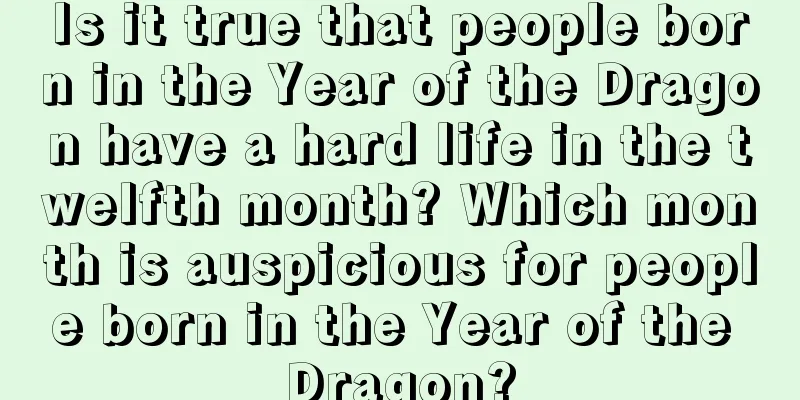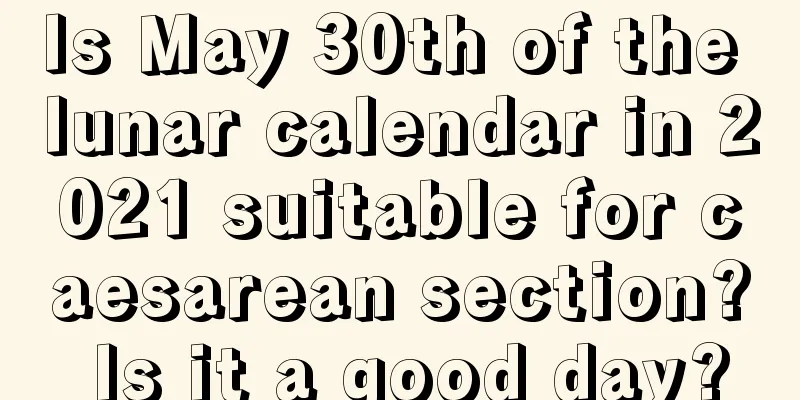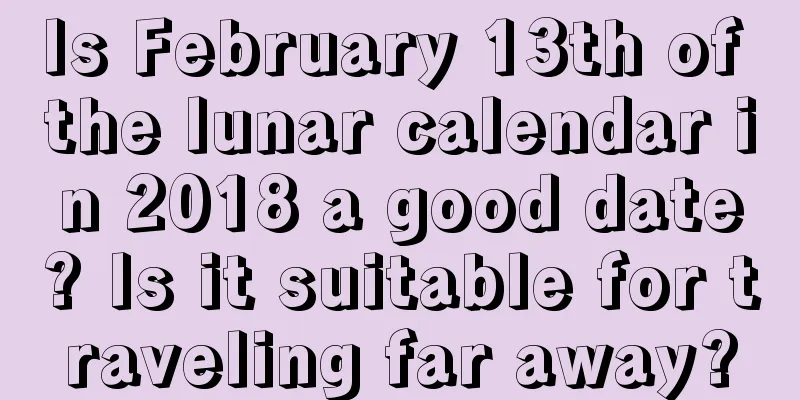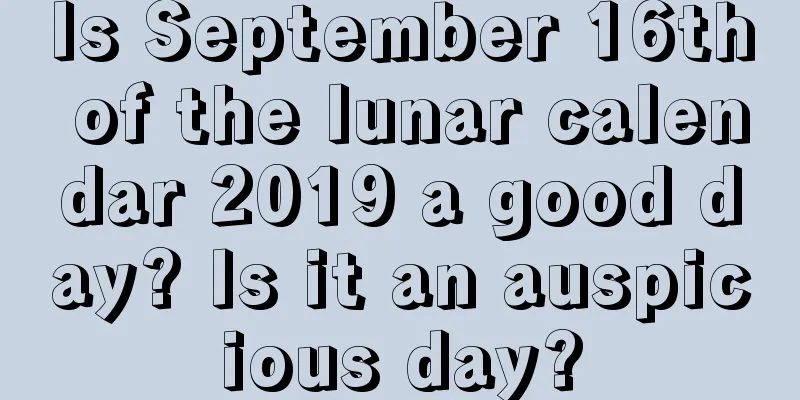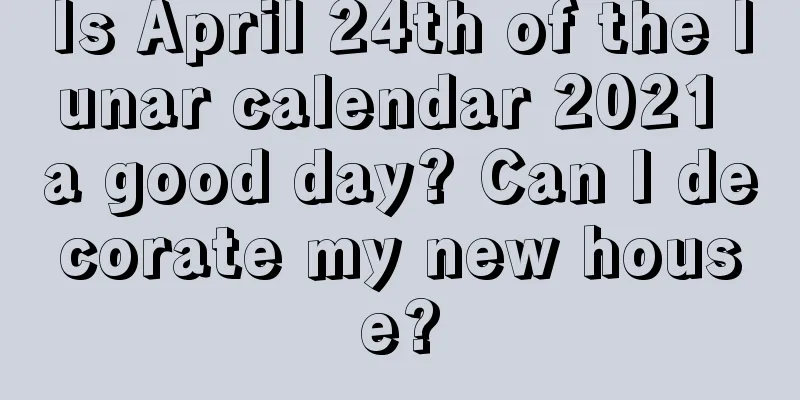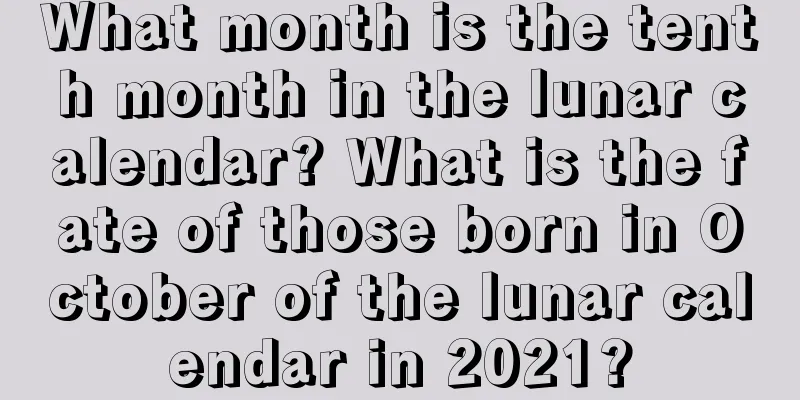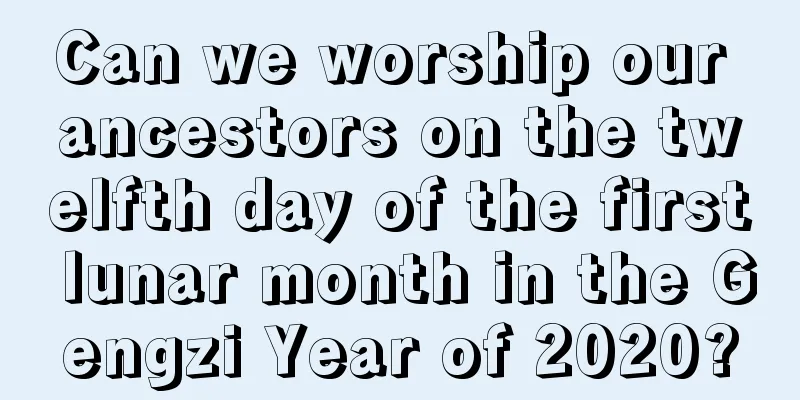Is it okay to hold the funeral on the fourth day of the fourth lunar month in 2018? Are there any procedures for the funeral?
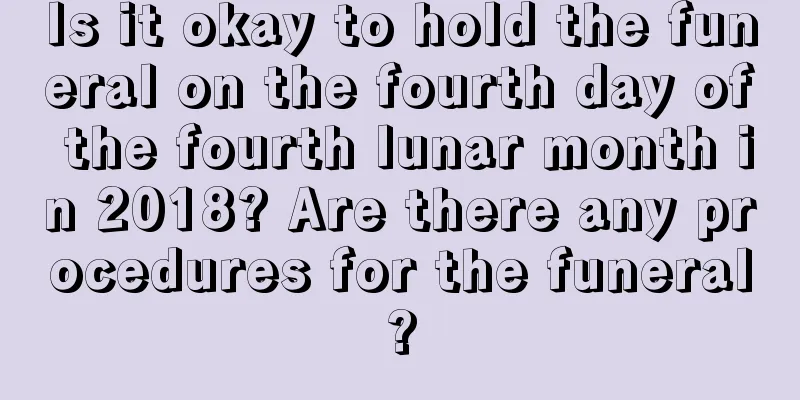
In most places in China, burial is the trend. After a person dies, they are first placed in a mourning hall for worship and then buried in the ground. This is the saying "rest in peace". April is also known as Mengxia, Yinyue and Meiyue. The fourth month of the lunar calendar means the arrival of summer. Fortune Teller.com provides you with more information related to the fourth month of the lunar calendar in 2018. Welcome to learn more!Is it okay to hold a funeral on the fourth day of the fourth lunar month in 2018?The fourth day of the fourth month of the lunar year 2018 (lunar calendar)Taurus, Friday, May 18, 2018 (Gregorian calendar) 【Today’s lunar calendar is suitable】 Pray for blessings, get married, install beds and stoves, resolve medical treatment, settle lawsuits, build houses, accept marriage proposals, seek heirs, fast and offer sacrifices, erect pillars and put up beams, plant crops, raise livestock, dig wells, offer sacrifices, and catch fish. [Today’s taboos in the almanac] Construction, groundbreaking, opening of market, establishment of bonds, collection of money, shipment, appointment, groundbreaking, funeral, burial, moving into new home, travel, migration, separation, opening warehouse Funeral ProcessIn the old days, before the funeral, there was a "pointing the master" ceremony in various places in Shanxi, such as Qin County, Qi County and other places. That is, ask someone to use a cinnabar pen to add a dot to the character "王" originally written on the tablet, so that the character "王" becomes the character "主". Commonly known as "Chengzhu", it means becoming a deity. The person who points out the host is called the "pointing host official" and should be a local respected celebrity, scholar or local governor. This ceremony is generally limited to middle-aged and elderly people who died of natural causes, and is not performed for those who died young or died violently.On the day of the funeral, relatives, friends and neighbors gather at the bereaved family to offer sacrifices and funeral gifts to express their condolences. The funeral rites generally include sacrificial banquets, steamed buns, mourning banners, and paper-made items. Close relatives send off the sacrifice. Commonly known as "sacrifice", it is mainly composed of food, and each set is decorated with paper flowers of varying sizes. The second is steamed buns, which are a kind of pasta that is put out of a bowl and steamed in a basket. Most friends and relatives would send mourning banners and couplets, which later evolved into a piece of cloth. Ordinary neighbors send four-color paper gifts, including candles, incense, tin foil, and paper, or just paper. After the 1950s, paper gifts were mostly replaced by wreaths. After the mourners have paid their respects, the eldest son of the deceased kneels down to pay his respects. He then carries the head of the coffin on his back and moves the coffin out of the mourning shed with the help of everyone. This is commonly known as "taking the coffin out of the mourning shed." In all parts of Shanxi, there is a custom of smashing a rice bowl used by the deceased during his lifetime behind the coffin when the spirit is taken out. In the Wuzhai area, it is called "cutting off the disaster", which means to cut off the disaster and kill the evil spirits, and to eliminate disasters and misfortunes. In some places, people also smash the medicine jars used by the deceased during his lifetime, to indicate that no one in the family will get sick anymore and there will be no need to boil medicine anymore. Before the coffin is moved, in the area of Qi County in Jinzhong, the sons of the deceased have to perform a ceremony of pressing the "food pressure bowl". They put various dishes and foods into a porcelain jar and then took turns pressing it until it was full. Place a steamed bun on the top to cover it, pierce holes vertically with a pair of chopsticks, and then place some red-dyed vermicelli on top. This can of food, together with the "Xiaqi Mansou" and "Eternal Lantern", will be buried with the coffin during the funeral. After the coffin is carried out of the mourning hall, it is placed on a pre-tied rack, which comes in several types, including a tofu rack, a two-dragon pole, and a single-dragon pole. In Wuzhai area, an altar and offerings are placed in front of the coffin. Family members carry soul-guiding banners and walk around the coffin three times to the left and three times to the right to the sound of drums and music to express their attachment to the deceased. Pour the offerings once every rotation. After the coffin is circumambulated, it is lifted up and the body of the deceased is taken out of the coffin, which is locally called "circling the coffin and starting the funeral." |
>>: Is it a bad idea to get a haircut on April 14th of the lunar calendar in 2018?
Recommend
A comprehensive review of Lantern Festival customs: Do you know the top ten customs?
Introduction: The Lantern Festival is a traditiona...
Is it okay to pray for a child on December 5, 2019? When is the due date?
Is it okay to pray for a child on December 5, 2019...
What are the auspicious days in the seventh month of the lunar calendar in 2021?
Chinese culture has a long history and is profound...
How about the 11th day of the eighth lunar month in 2018? Is it a good day to get a haircut?
Introduction: Although getting a haircut is a comm...
Can we burn incense and worship Buddha during the 2018 Spring Festival? What are the particulars of burning incense and worshiping Buddha?
China is a relatively traditional country with dif...
What gift is suitable for your boyfriend on New Year's Day?
If you want to spend the New Year's Eve with y...
What is the fate of a girl born on December 11th of the lunar calendar in the Gengzi year of 2020?
What is the fate of a girl born on December 11th o...
Is it a good idea to pick up a new car or go traveling on the third day of the first lunar month in 2018?
What day is the third day of the first lunar mont...
Why is it not a good idea to be born in Lidong? What is the fate of people born in the beginning of winter in the Year of the Rat?
At the Beginning of Winter, the ground begins to f...
Is it a good day to hold a funeral on the seventh day of the fourth lunar month in 2019? Check the auspicious and inauspicious times on the seventh day of the fourth lunar month!
Introduction: Funeral is also an important event, ...
Is the seventh day of the twelfth lunar month in 2018 suitable for raising the beam? How is the day?
When building houses in ancient times, before putt...
What is the zodiac sign of a child born on the third day of the tenth lunar month in 2021? What are the characteristics?
From the moment a person is born, the moment when ...
What is the lunar calendar content for Mid-Autumn Festival in 2021? What is the auspicious direction for the God of Wealth during the Mid-Autumn Festival?
Mid-Autumn Festival is a traditional festival in m...
In which direction is the God of Happiness on the ninth day of the seventh lunar month in 2019?
In the farmer's calendar or wall calendar, we...
What is the fate of a girl born on April 28th of the lunar calendar in the Year of the Ox 2021?
Sophora japonica flowers bloom in April, so it is ...
